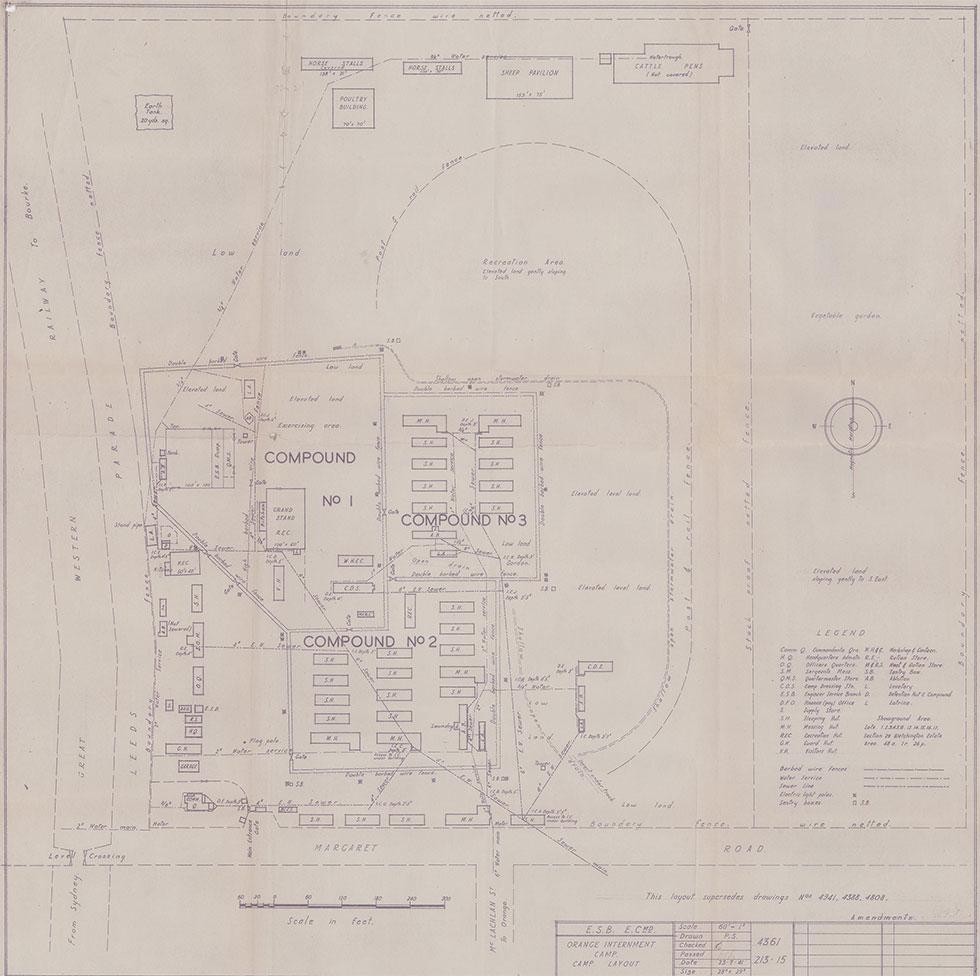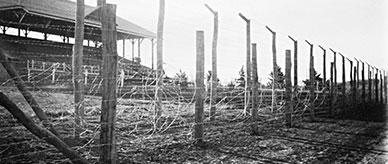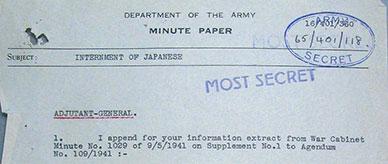


About this record
This record shows a map of the internment camp at Orange, that held mostly German and Italian internees. The internment camps that were set up in Australia were often repurposed facilities, such as the Long Bay jail in New South Wales or the Keswick army barracks in South Australia. However, there were also camps that were purpose built to hold internees as the war progressed and repurposed facilities became too small.
The camp at Orange shown in the map was a repurposed facility. The layout and features shown are typical of many Australian internment camps, including the camps at Loveday, Hay and Tatura where internees of Japanese ancestry were taken. The map shows the military style of internment camps, with the inclusion of areas such the ‘messing hut’ and 'dressing station'. In fact, all interned civilians were given a military service number to identify them.
Internment camps were required to meet the standard set by the Geneva Convention of 1929, specifically the 'Convention relative to the Treatment of Prisoners of War'. This meant that the people held there – whether internees or prisoners of war – had to be afforded the right to clean and hygienic spaces, enough food and water, access to recreational time, and payment for work they were required to complete.
Internees were also able to object to their internment. A filed objection would result in a tribunal hearing where the case for release would be discussed. Very few objections were successful, with the tribunal deeming that the safety of Australia would be compromised if the interned person was released in almost all cases.
Food for thought
The Universal Declaration on Human Rights (UDHR) was written after the Second World War. It provides a statement of the human rights that all people have worldwide.
Look at a copy of the UDHR – which rights appear to have been met by Australian internment camps during the Second World War, and which rights appear to have been violated?
Related records
Related themes
Need help with your research?
Learn how to interpret primary sources, use our collection and more.






